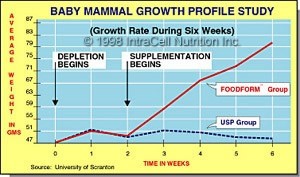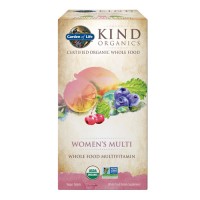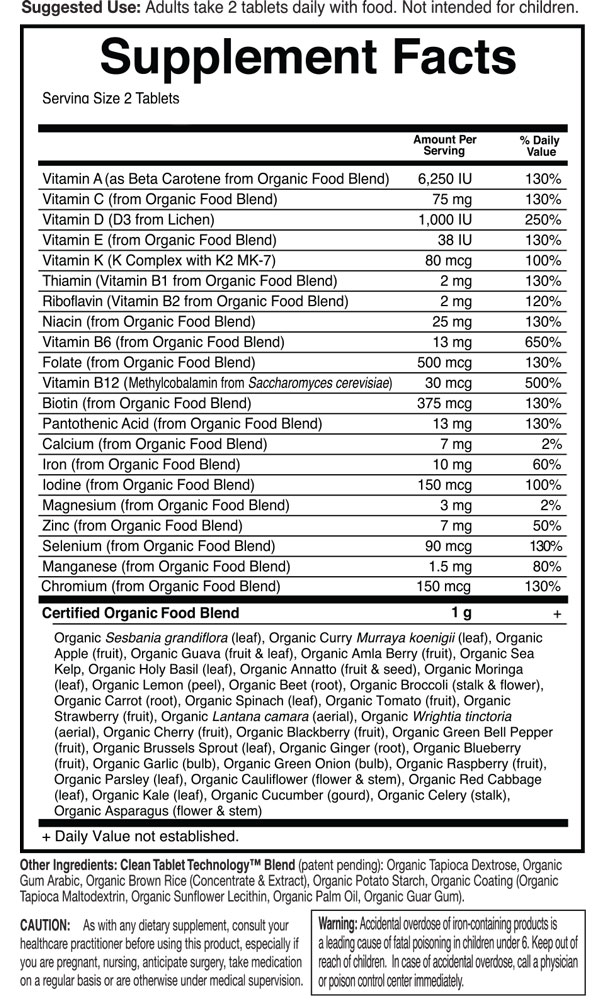THE TRUTH ABOUT FOODFORM VITAMINS
 Wednesday, May 12, 2010 at 8:36AM
Wednesday, May 12, 2010 at 8:36AM Whole food vitamins sound like the vitamins were made in food and then extracted or concentrated out. A few vitamins are made this way. Natural vitamin D comes from fish oil, Natural Vitamin E comes from vegetable or grain oils, vitamin C comes from corn sugars, natural beta carotene comes from D. salina algae, and most of the B vitamins used to come from liver and yeast (now most yeast products are fortified with synthetic B vitamins).
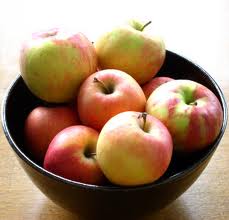 About 70% of synthetic B vitamins are 100% chemical and the other 30% are chemically extracted out of often genetically modified bacteria. Yes, there are many chemical steps involved in the production of all these vitamin forms. Plus, all vitamins, except vitamin B12, are also available created 100% in the LAB from synthetic chemicals, usually petroleum distillates. ref
About 70% of synthetic B vitamins are 100% chemical and the other 30% are chemically extracted out of often genetically modified bacteria. Yes, there are many chemical steps involved in the production of all these vitamin forms. Plus, all vitamins, except vitamin B12, are also available created 100% in the LAB from synthetic chemicals, usually petroleum distillates. ref
Now, what about the source for "natural" Whole Food Vitamins? The truth is they mostly use tweaked vitamins from the sources and methods mentioned in the above paragraph. See update below for a few exceptions. The tweaked part is that they next feed the above vitamins to growing live yeast cells which naturlly absorb certain vitamins but need a little push to get all of the other vitamis forms into the yeast cells, especially the fat soluble vitamins which are very limited in growing yeast. Here an assumption is made that the yeast cells somehow change the above mentioned vitamins into a more food like form. This point has never been proved, but is assumed from the results of studies testing the new material. Yes, this process begins with some synthetic and some natural isolated vitamins. The yeast growing process is stopped and then enzymatically processed to disintegrate the yeast cell wall since allergies might manifest in some sensistive people. article
Update Sept 2014. The MYKIND Organics from Garden of Life and in a few other Brands represent a new technique in natural vitamins. See here.)

UPDATE 11-2016 Both MegaFood and New Chapter have recently changed some of their labels to more accurately reflect what is really in their multiples. Yes, these new labels reflect the truth that there are some synthetics. This has dramatically increased the ratings of these Brands, but they still have a ways to go to measure up to the new vitamin criteria.
WHAT ARE FOOD FORM VITAMINS????
Update: Garden of Life's new MyKind Organic Vitamins is in a category by themselves wtih only a few other brands. article
The food form like vitamin category does represent a middle ground between all natural vitamins made by growing plants and the pure synthetic vitamins. FoodForm Vitamins (or Whole Food Vitamins as sometimes mistakenly called) are vitamins that attempt to mimic a similar appearance and makeup to the vitamin structures that nature forms in growing foods, such as Vitamin C made inside a bell pepper or in an orange. The vitamins that nature builds completely in growing plants are the real whole food vitamins. But, there are very few supplements in the marketplace that naturally derive vitamins concentrated out of whole foods. The dosages of vitamins 100% nature built are very low. To build the foodform vitamins, synthetic vitamins and natural isolated vitamins are fed to growing yeast cells or algae or bacteria in an attempt to get the yeast to reconstruct these vitamins into a more food like appearance and food matrix. It is a rather large stretch to call thses new vitamin forms "whole Food" vitamins. The primary Brands of food form like vitamins include Garden of Life, MegaFood, and New Chapter. Garden of Life now has a new line that fits into a slightly different category called the MyKind Organics. article
...Most Food Form Vitamins are NOT from Food...
Here is one of the best explanations I have found on the web. This is from a past page on Living Foods USA; "Food State Biologics™ are true “re-natured™” vitamin and mineral supplements – all nutrient vectors (CCFs) are molecularly bonded to ensure bio-availability surpassed only by food itself. Absorption is proven greater than with isolates, chelates and liquids..."
EXPLANATION: Some Synthetic and natural isolated vitamins are fed to growing yeast where the synthetic may get "re-natured" back into a food like complex form inside the yeast cells. At least that is the design and theory. Unfortunately, it is difficult to assay and know if "all nutrient vectors are molecularly bonded" in the finished product. Under a microscope, Scientists see that this food form vitamin developed by yeast is different than a synthetic vitamin, but it is also slightly different than a true nature made in food vitamin. Study results comparing food form to synthetic show a slightly greater absorption rate for most of the foodform vitamins and this might represent the difference seen in blood levels. Seldom are foodform vitamins compared against true from nature made natural vitamins.
ALL WHOLE FOOD VITAMIN COMPANIES ADMIT IN THEIR LITERATURE THAT THEY ADD EXTRA VITAMINS (to the yeast) AT SOME POINT IN THE MANUFACTURING PROCESS.
The significant aspect in the story from the food form vitamin companies is that some of the nutrients starting out as synthetic are now back into a "natural" looking food combination structure. Is this a factor of importance? Inside the human body, this process occurs for the synthetic form of folic acid converting it in the liver into the natural folate form. The question needing immediate verification is this; Are the other synthetic vitamins added to growing yeast turned into a "natural" form? Or are they just synthetic vitamins surrounded by food elements? And, of course, the food form companies make a rather large assumption that all synthetic vitamins are really different than their natural form. Some are very different and others not so much. The important aspect here is to look at the finished vitamin compounds the body forms from the different vitamin types. At this stage, some vitamin compounds are exactly the same while others are worlds apart, like for vitamin E.
The simple comparison studies between food form vitamins, real food vitamins, and synthetic vitamins' ability to increase blood levels of the co-enzyme form of vitamins after a similar amount is ingested will prove the most valid tool for evaluating any differences. Co-enzyme forms represent the form closest to the ultimate form the body uses for vitamin actions from enzymes.
...Chief Advantage of Food Form or Whole Food Vitamins...Lower Dosages and slightly Enhanced Absorption...
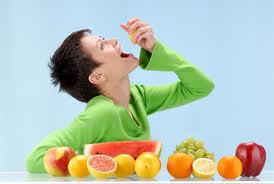
Here is the simple explanation of how most food form vitamins are made, regardless of the impression they try to convey of being all from food:
- Take a regular multiple vitamin capsule (evidently doesn't matter if ingredients are synthetic or isolated natural), open it up and drop the ingredients into a container of water (some nutrients or vitamins that yeast will not absorb have to first be combined with a protein matrix that the yeast cell will recognize and take in)
- Add live yeast cells, the kind used to make bread, and some protein often from soy and a sugar source; yeast cells are big sugar addicts.
- Cover, generate a certain temperature (95 - 105), stir slowly, and wait for the yeast to grow increasing significantly in numbers and quantity as it engulfs the added nutrients while naturally building a few vitamins natural to yeast.
- Some foodform vitamin companies add probiotic bacteria here to ferment this mixture. Culturing food has historically played a preservative role and imparts digestive value to many food nutrients.**
- At the proper time, an enzyme process is used to stop the yeast growth and dissolve the yeast cell walls to remove the highly allergic cell wall elements for sensitive or yeast allergic people.
- Then, the remaining liquid material holding the newly formed vitamins and minerals, now combined with other nutrients the yeast formed or engulfed, is dried to remove the water.
- Next, the dry mass is ground into a powder
- The powder is poured into what will now take about 4 capsules instead of one
- And you have "food form like" vitamins and minerals, NOT exactly 100% food made vitamins.
- Yes, yeast cells do produce some completely natural vitamins during their growing process, BUT not anywhere near the amounts found on labels of foodform vitamins, often less than 10% depending upon label dosages. Click here for Intracell's explanation for production methods of foodform vitamins on their website. Plus, here is the webpage for Grown by Natrue vitamins. It attempts to explain what "Re-natured" means.
NOTE: The CEO of MegaFood was interviewed and made the following statement: "we want to produce vitamin C with all the other elements that are delivered around the C. So it’s not just the sugar and alcohol that create ascorbic acid: When we are delivering our C we want it to be as close to natural food as possible." He admits his vitamin C comes from sugar and alcohol, the same ingredient lab process used to make most "synthetic" ascorbic acid. This Lab process is similar to how most animals produce their own vitamin C from glucose sugar using an enzyme process that humans and a few animals no longer produce, an evolutionary flaw of nature.
Continuing from the MegaFood website describing the FoodState process: "We then move this yummy pulp through a series of tanks where we integrate in more Vitamins for potency. And now, your body not only recognizes the Whole Foods (“Hello Food!”), but it allows our super fresh nutrients to be readily absorbed as food." Did you notice the "we integrate in more Vitamins for potency" line which means they most likely add isolated natural or synthetic vitamins to the food mixture. This is called "standardization" of vitamin dosages.
EXAMPLE for Vitamin E in Selenium/Vitamin E product. The label lists 50 IU of Vitamin E from 200mg of Food State material: "listing as the source" brown rice. Cooked Long grain brown rice has .1 IU of vitamin E in one cup. To get 50 IU, one would need to extract the vitamin E content out of over 200 cups of brown rice, or 500 cups of cooked brown rice, since rice swells when cooked. Does this fit reality from a logicstics or price point? Of course not! THE VITAMIN E IS NOT from THE BROWN RICE, IT IS JUST mixed in WITH the brown rice. The foodstate material is a combination of brown rice, possibly some left over yeast, and added vtamin E. Yeast is naturally very low in vitamin E and the other fat soluble vitmains; A, D & K.
Yes, this is simplified a bit, but you get the idea of just what foodform vitamins really are and how they are made. The companies that sell these vitamins imply the starting vitamin form is not important, just the finished one. This assumes that regular vitamins, some natural isolated and some synthetic, can become true food like vitamins inside the yeast cells similar to those made by nature. These companies down play the fact (at least New Chapter mentions this once in their literature) that they start out with some USP synthetic vitamins and inorganic minerals which are fed to the growing yeast cells. And again, a very tiny amount of some B vitamins are naturally made by yeast cells and these would end up in the food form vitamins as well. NOTE: Many of the nutritional yeast powders available in health food stores today are spiked with synthetic vitamins and inorganic minerals in the growing process or are added after the yeast is finished growing.
Of course there are very precise procedures, temperature controls, and recipes for making food form vitamins to control against yeast mutations, bacterial contamination, and to get the cooperation of the little yeast cells to form the proper vitamin and mineral mixtures. And yes there is some advantage for better assimilation. A few foodform vitamins also use bacteria to culture the foods and further help vitamin absorption. Plus, there could be some advantage from dead bacteria still in the product supplying protein and other nutrients, but very tiny amounts. The extra food ingredients listed on foodform vitamin labels are only present in very minute amounts. At these amounts, influence on the body would not be significant without greater quantities from natural foods as well.
The remaining question that is of concern; what happens once these vitamins get into the body? Is there an advantage over isolated vitamins whether synthetic or naturally isolated? How do they compare to real food made vitamins? One food form vitamin company sometime ago hired a prestigious scientific researcher to construct studies to provide proof for the food form vitamin theories. There are some advantages noted, but also some smoke and mirror tricks to increase their appeal and justify price. The best advantage just might be lower dosages, but watch out for Folate amounts. Even the natural form still might have the potential for adverse effects at these larger amounts, assuming the yeast cells convert the synthetic folic acid into the natural folate form, similar to what happens in limited amounts inside humans.
WHY ARE SYNTHETICS NOT LISTED ON FOODFORM LABELS
UPDATE 11-2016 MegaFood with the introduction of Doctor LowDog formulated line has finally corrected labels to more acturately reflect what all their products have always been, but only the Dr LowDog vitamins have new correct labels so far. New Chapter also has recently changed labels to honestly reflect what is really in their multiples. Many articles on this website will need to be re-worked to update these changes.
UPDATE 2-2018 MegaFood changes labels to reflect what this article is about. Synthetics are now listed on their labels. Their vitamins do have some synthetics that are combined with foods. They always have.
This is a real mystery. It could be due to a technical fluke that many industries use. The label lists what the manufacturer of the finished product adds together, NOT what may have been already added by one of the raw material suppliers. In the case of foodform vitamins, a different company could add the synthetics and isolated natural vitamins to growing yeast cell mixture and the finished product would be supplied to the foodform vitamin companies. So they are only legally required to put on the label that they use foodform vitamin material (yeast)(whole food base, etc.) instead of all the ingredients that went into making this material, such as those vitamins that are isolated natural or synthetic.
Maybe it's like the farmer who sprays chemicals on apples while they are on the tree is not required to list that the apples still contain these chemicals when they reach the marketplace.
EXAMPLE: You will see on some labels an ingredient simply listed as natural flavor. This "ingredient" could be really made up of over a dozen different ingredients that do not have to be listed on the label. The industry and the Government know what this term means but the consumer is kept in the dark.
The Science of Foodform Vitamins
Here is a link to the FoodFormtm Company's explanation and support theories. reference The research and charts sound impressive, but remember, there may be biases in research results sponsored by the foodform vitamin companies. Valid scientific method protocol studies by third parties are still needed to once and for all settle the claims for food form vitamins.
Scientific Proof for Vitamin B1 Food Form Nutrient
This reference scientific abstract is presented to show that yeast cells have the ability to change a synthetic form of thiamine into a more natural form, thiamine diphosphate, a feat that humans also exhibit since Beriberi was eliminated giving synthetic vitamin B1 as thiamine hydrochloride or thiamine mononitrate, the synthetic forms of vitamin B1. This example is given to show pathways for the yeast cells to change an outside source of thiamine, and that the synthetic form is suitable starting material, into the natural useful forms, thiamine pyrophosphate and thiamine diphosphate. It must be that the "thiamine" part of both synthetic and natural B1 is exactly the same, or recognized as such by the body. A question remains as to the percentage of change the yeast achieves for each B vitamin.
**The question of fermentation needs some extra explanation. When sugars, grains, or other foods ferment, new elements are formed such as acetic acid and lactic acid, plus ammonia, carbon dioxide, and ethanol alcohol. Nature uses fermentation to begin the decomposition and breakdown of foods and tissues back into soil nutrients. Man discovered this process and used it with some controls for wine and beer making, and also for preservation of foods without refrigeration. For the most part, these newly formed elements are waste products the body must convert into less harmful forms and eliminate. Fermentation does have some values in that lactic acid creates an acid environment to increase growth of beneficial bacteria and eliminate pathogenic ones. Plus, some elements in foods such as soy are converted to forms that either enhance their actions (isoflavones) or reduce unwanted actions such as by destroying phytates that can bind up minerals. In fermenting dairy products, folic acid is increased while B12 is slightly lowered. While fermentation is of value, the scale from the amount of cultured food in each foodform vitamin capsule or tablet is so small, the overall benefit may be questionable.
UPDATE 8-2014
Garden of Life has just introduced a new line of Organic Non-GMO multiple vitamins all from food, called the KIND Organics. For more info go here.
WRAP UP
Food form vitamins appear to exhibit increased absorption rates, but you could still have for some nutrients in their synthetic form just wrapped in food elements. During digestion, must vitamins are completely separated down to the isolated vitamin and then get re-attached once inside intestinal cells with their unique body wise nutrient carriers. This would almost completely negate this food form creating process. At least there is still better absorption.
Perhaps the most important issue is over this basic principle. Does the yeast ingestion and fermentation process RE-ARRANGE the molecular structure of synthetic vitamins to more closely resemble or be identical to the vitamin structure that nature builds. This assumption is for those vitamin structures that have observable differences between the natural and synthetic forms. This fact you would think could be identified with the high powered microscopes and testing procedures of today. Factors this might influence include receptor attachments as docking sites or the ability to interact with other nutrients. These may be harder to discover, but again scientists should be able to determine and measure.
After assimilation, vitamins become part of co-enzymes which can be measured. A simple in vivo (in body) blood analysis would tell the level of increase for co-enzymes from equal amounts of food form vitamins compared to synthetic, isolated natural, or just food vitamins. Why is this information not more readily available? Some of the charts presented in the support link above do show significant differences in blood levels of food form vitamins compared just to synthetics. This increased absorption may be the real benefit of foodform vitamins with their lower but still adequate potencies for most nutritional concerns.
A CATCH 22 for FoodForm Vitamin Logic
It is of interest to note that these charts also are showing a catch 22 for the foodform theory. Synthetic vitamins do raise blood levels, just not as much as an EQUAL amount of some foodform vitamins. Thus one could just take 2 to 3 times more synthetic vitamin to equal out the differences depicted on these charts. Some of the foodform increases are not anywhere near 2 times greater. This represents a vital aspect for comparison.
The literature from the foodform companies often mentions that synthetic isolated vitamins are not true vitamins. But, this would negate their own charts which show synthetic vitamins also INCREASE blood levels, just not as much as an equal amount of foodform vitamin. The literature also stresses milligram size differences are not the true measure of vitamin effectiveness, and that a small amount of foodform nutrient is equal to a much larger amount of synthetic isolated vitamin or mineral. Missing from this discussion is a comparison of foodform vitamins to real nature made vitamins in food as well as to some natural source isolated vitamins. Synthetic vitamins are mostly used for comparison purposes. Plus, some of the charts represent test tube studies which do not always agree with "in body" results. Synthetic vitamins have been found to be excreted out of the body faster than the same amount of natural.
One food form vitamin company has hired a prestigious pharmaceutical researcher to prove the validity of food form vitamins. It will be interesting to see these results. Just what happens to food form vitamins once they get into the body? Will they exhibit superiority or not? If not, what will happen to this research? Do you think the company would be as willing to reveal negative results as much as they would positive ones? Follow up: It has been many years since the hiring announcement. No new scientific revelations yet.
OF INTEREST: Many years ago, a court judgement ruled against foodform vitamin advertising claims when they were compared against synthetic vitamins. It is a very real possibility that this judgement is still governing what the food form vitamin companies can legally say in advertising. There are a lot of third party internet vitamin websites and blogs that fill-in the blanks left open by the FoodForm Vitamin Companies under this judgement.
The most disheartening fact is that the foodform vitamin companies apparently and intentionally structure marketing verbiage to leave their vitamin source information open to "wishful thinking" and not actual facts. But now you know the real story. Many if not most foodform vitamins start out as synthetics and or isolated naturals. Remember, since they do not list forms or sources on labels like all the other vitamins are required to do, the foodform vitamin companies are free to use any and all synthetic vitamins if they so desired. They actually do mention they use some USP "synthetic" vitamins, but it is tucked deep within their website where it is almost impossible to find.
Foodform vitamins have some benefits and unbiased research might discover more in the future. Measuring blood levels of the active vitamin forms in the body for equal ingested amounts of the four types of vitamins could settle all these issues. The four types of vitamins include:
1. Food vitamins made by nature in growing foods (true whole food vitamins, vitamin C in broccoli)
2. Isolated natural vitamins out of foods. (vitamin E as d'alpha tocopherol from soy oil)
3.. Synthetic vitamins. (dl'alpha tocopherol made in lab)
4. Foodform like vitamins (often erroneously called whole food vitamins)
Unanswered to this day: Why do foodform vitamin companies still feel the need to mis-lead the Public about the true source of their vitamins (yes, some synthetic) if they most likely have a better product anyway?
NOTE: Dr Mercola claims to have a multivitamin plus vital minerals that are all from whole raw foods. This is not quite the reality, but a few of the forms are closer to food forms than most other vitamins. Some definitely are synthetic, especially the B vitamins. See label here for details. Better to only take 3-4 instead of 8. Missing the vitamin E family.

